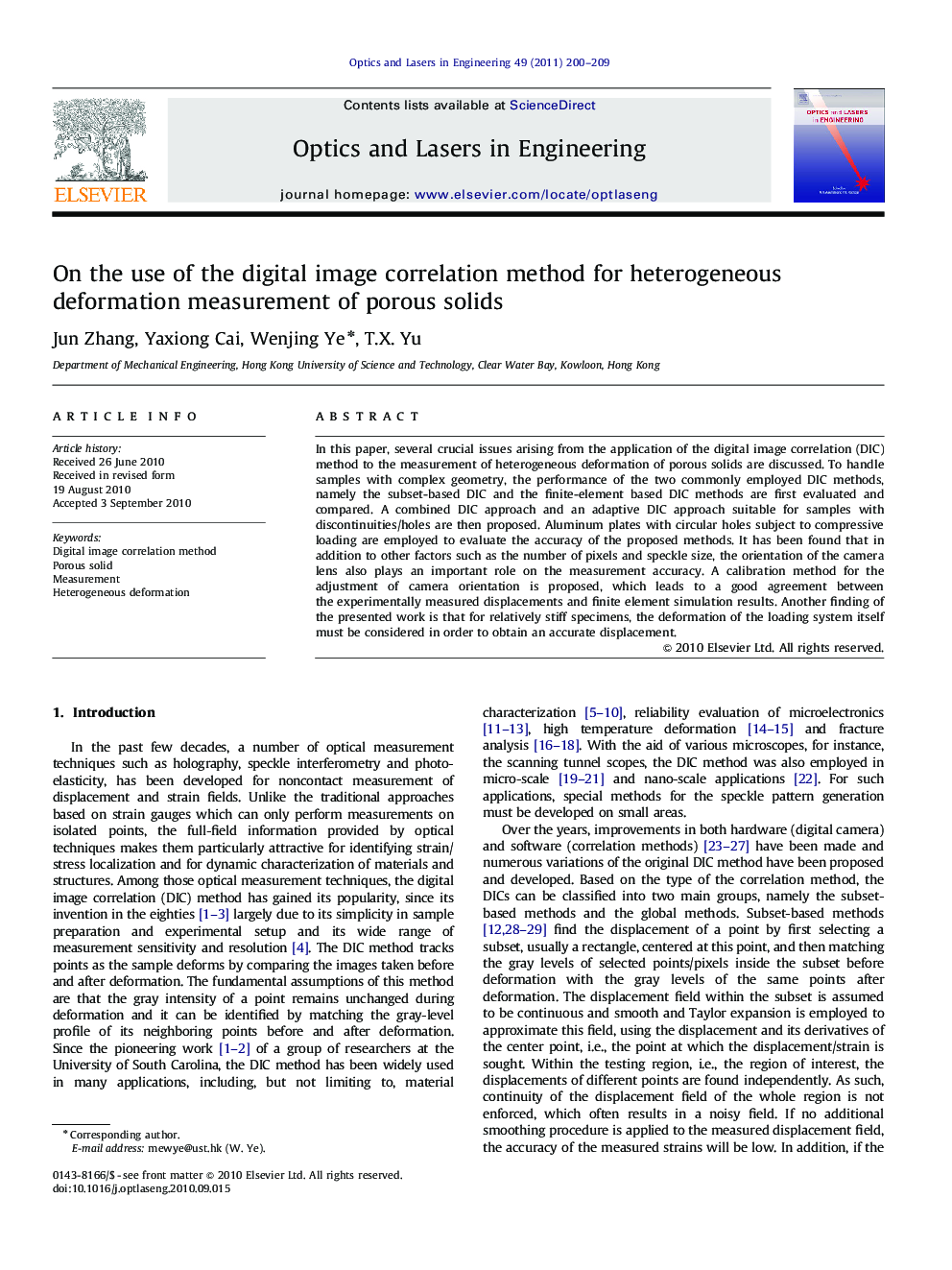| Article ID | Journal | Published Year | Pages | File Type |
|---|---|---|---|---|
| 735835 | Optics and Lasers in Engineering | 2011 | 10 Pages |
In this paper, several crucial issues arising from the application of the digital image correlation (DIC) method to the measurement of heterogeneous deformation of porous solids are discussed. To handle samples with complex geometry, the performance of the two commonly employed DIC methods, namely the subset-based DIC and the finite-element based DIC methods are first evaluated and compared. A combined DIC approach and an adaptive DIC approach suitable for samples with discontinuities/holes are then proposed. Aluminum plates with circular holes subject to compressive loading are employed to evaluate the accuracy of the proposed methods. It has been found that in addition to other factors such as the number of pixels and speckle size, the orientation of the camera lens also plays an important role on the measurement accuracy. A calibration method for the adjustment of camera orientation is proposed, which leads to a good agreement between the experimentally measured displacements and finite element simulation results. Another finding of the presented work is that for relatively stiff specimens, the deformation of the loading system itself must be considered in order to obtain an accurate displacement.
